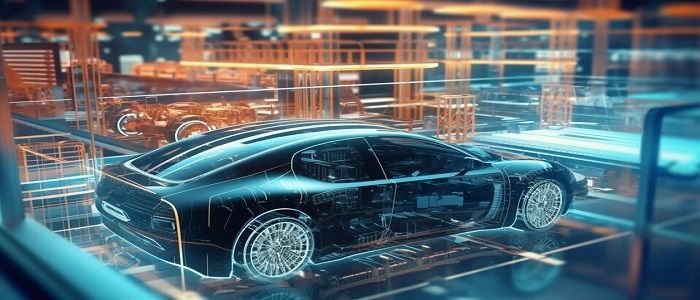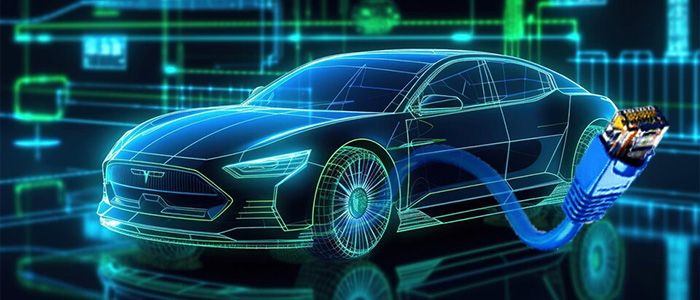The Evolution of Cybersecurity in the Automotive Industry
In a rapidly evolving world driven by the relentless march of technological advancement, the automotive industry finds itself at a crucial crossroads. The integration of cutting-edge technology and intricate connectivity into vehicles has not only heralded a new era of convenience and limitless possibilities but has also bestowed upon us a novel challenge: the intricate and complex realm of cybersecurity. As we delve into this blog, we embark on a captivating journey that traverses the intriguing evolution of cybersecurity in the automotive industry. This journey is designed to illuminate not only its paramount role in shaping intelligent and efficient vehicles but also its critical significance in guaranteeing the safety, dependability, and utmost security of both drivers and passengers. Early Challenges in Automotive Cybersecurity Just a short while ago, the idea of cybersecurity in the automotive industry seemed distant, almost irrelevant. Cars were primarily mechanical entities, with digital interfaces only beginning to take root. However, as technology continued its relentless march forward, vulnerabilities began to emerge. These vulnerabilities weren’t mere hypotheticals—they were demonstrated through real-world instances that showcased the alarming potential for remote breaches, unauthorized access, and even the manipulation of vehicles. These incidents acted as a clarion call, spurring the industry to wake up to the significance of cybersecurity. This awakening set the stage for an unprecedented collaboration between automotive manufacturers and cybersecurity experts. This partnership gave rise to the concept of “ethical hacking,” where experts intentionally probed vehicle systems to uncover vulnerabilities that needed immediate attention. Regulatory bodies and governments played a pivotal role by enacting mandates that prescribed specific cybersecurity standards for vehicles. This collective effort laid the groundwork for an approach that positioned cybersecurity as a core element in the DNA of vehicle design and development. Shift Towards a Centric Approach of Cybersecurity in the Automotive Industry The monumental shift towards emphasizing cybersecurity marked a pivotal turning point for the entire automotive industry. This transformative shift was not a mere coincidence but a result of a dynamic synergy that unfolded between automakers and cybersecurity specialists. This synergy effectively rewrote the industry’s very outlook on security, propelling it into uncharted territory. As a robust response to the ever-growing challenges posed by digitalization, the concept of “ethical hacking” emerged as a central theme. This approach, where authorized experts intentionally probed and dissected vehicle systems, was an act of proactive defense aimed at identifying and rectifying potential vulnerabilities before they could be maliciously exploited. In a synchronized rhythm, governments and regulatory bodies joined hands with key players in the automotive sector to establish stringent guidelines. These guidelines didn’t just serve as directives; they set in stone specific cybersecurity benchmarks that every vehicle must meet. This collaborative endeavor, marked by shared determination and a laser focus on security, culminated in the creation of a comprehensive framework. This framework, informed by the insights of cybersecurity experts, bestowed upon cybersecurity a role of paramount significance right from the nascent stages of design and development. It’s within this framework that the seeds of secure and resilient vehicles were sown, growing into a safety net that envelops every facet of the modern automotive experience. Innovative Solutions for Automotive Cybersecurity As the automotive landscape found itself increasingly infiltrated by concerns about cybersecurity, a wave of ingenious solutions surfaced in response. Spearheading this movement were intrusion detection systems, formidable guardians of the intricate vehicular networks. These systems, akin to vigilant sentinels, stood unwaveringly watchful, meticulously analyzing every byte of data for even the faintest trace of unusual activities or anomalies that might serve as an early indicator of a potential cyber breach. Their vigilance extended beyond mere detection, as they swiftly furnished real-time alerts that served as a clarion call to both manufacturers and users. Armed with these alerts, swift and decisive actions could be taken, effectively mitigating potential threats before they could escalate into something more sinister. Amidst this landscape of innovation, one advancement emerged as a game-changer: the advent of over-the-air (OTA) updates. This groundbreaking feature held the power to revolutionize the way vehicles were maintained and fortified against emerging threats. Imagine a scenario where manufacturers could remotely transmit security patches and software enhancements, thereby ensuring that vehicles remained stalwartly fortified against the ever-evolving realm of emerging threats. Beyond its defensive capabilities, OTA updates elevated the very essence of the driving experience. Vehicles evolved beyond their physical form, morphing into dynamic entities that could be upgraded and enhanced with the simple transmission of digital code. This convergence of technology and automotive prowess not only fortified cybersecurity but also elevated overall vehicle performance and functionality, underscoring the symbiotic relationship between safety and innovation in the modern automotive landscape. Data Privacy and Protection In the era of seamlessly interconnected vehicles, the safeguarding of data privacy has catapulted to the forefront of collective concerns. In the backdrop of this digital evolution, modern cars have metamorphosed into veritable data generators, producing a torrential flow of information. From the precise GPS coordinates of travel routes to the intricate behavioral patterns of drivers, every interaction and engagement with the vehicle generates a valuable digital footprint. The monumental task at hand is ensuring that this treasure trove of sensitive information remains sheltered from prying eyes and malicious intent. This monumental responsibility has evolved into an imperative, one that manufacturers are tackling head-on by adopting state-of-the-art encryption methods and fortified data storage protocols. It’s akin to enveloping this invaluable data in an impregnable cocoon, rendering it virtually inaccessible to unauthorized parties. These protective measures extend beyond safeguarding data; they forge an atmosphere of trust, a sanctuary where drivers and passengers can rest assured that their personal information remains shielded in an era where data breaches have become increasingly commonplace. By weaving this layer of robust security into the very fabric of modern vehicles, the automotive industry is forging a path toward a safer, more secure digital driving landscape—one that underscores the critical importance of data privacy in an age where data is both currency and vulnerability. Collaborative Efforts in the Industry The
The Evolution of Cybersecurity in the Automotive Industry Read More »









